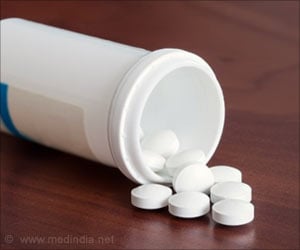A simple and an affordable follow-up test to identify children with acute lymphoblastic anemia (ALL), who respond well to their first chemotherapy regimen, has been developed by researchers at St. Jude Children's Research Hospital. Such children who have a good response may then be treated by a less aggressive treatment, during subsequent follow up visits.
This new test is based on testing of minimal residual disease (MRD), the relatively low percentage of leukemic cells, which survive following remission induction therapy treatment. This test would reduce the side effects associated with high chemotherapy doses and hence substantially improve the treatment outcome in children with ALL.The test helps clinician's identify and distinguish highly responsive disease from the treatment resistant forms. Appropriate decisions can then be taken regarding institution of milder, less toxic treatment modalities. Researchers interested in this cost-effective technique can cite the article, published in the online issue of the Blood journal.
Normal bone marrow derived cells harvested from ALL children, after 2 weeks of chemotherapy treatment are placed in a test tube that contains three probes. These probes are highly specific and therefore help in differentiating cancer cells from normal cells.
The test was conducted on 380 children with a diagnosis of ALL (B-lymphocyte origin), 19 days after the initiation of remission induction therapy. The test determined the presence of leukemic cells, in more than half of the patients (211, 55.5%) even if the cancer cells made up 0.01% or more of the total sample.
The incidence of relapse in patients diagnosed with 0.01% or more of leukemic cells on day 19 was about 29% after a period of 10 years. In those who had less than 0.01% of leukemic cells, the relapse incidence was as low as 5%. The simple test was able to accurately identify which patients would respond well to chemotherapy and which disease would relapse, better than the currently used standard risk factors such as presence of mutation (genetic change) in cancer cells and age of patient.
Comparable results have been obtained from the present test in comparison to the other expensive MRD tests that can only be performed at very few cancer centers, worldwide. The relatively high cost and the complex instrumentation involved in the MRD tests restrict wide spread use of such sophisticated techniques in the developing and underdeveloped countries.
Advertisement
The St. Jude Researchers in collaboration with its new partner institution in Brazil are working towards implementing International Outreach Program (IOP). This pilot childhood cancer project, based at Recife, Brazil, intends to identify children with MRD levels lower than 0.01% so that they can be instituted less intensive ALL treatment.
Advertisement
'Clinicians have known since the 1970s that about 40 percent of children with ALL can be cured with less intense therapy. The problem is identifying those children who will be cured with less intense treatment so you can avoid or lessen the complications caused by aggressive therapy. The new MRD test developed at St. Jude can be used to identify patients who might be cured with less intensive treatment approaches. This will decrease the toxicity and the cost of treatment. Hence, we anticipate that the use of our new technique will increase the number of children who can be treated, and reduce the number of children who suffer fatal infections,' concluded Ribeiro.





